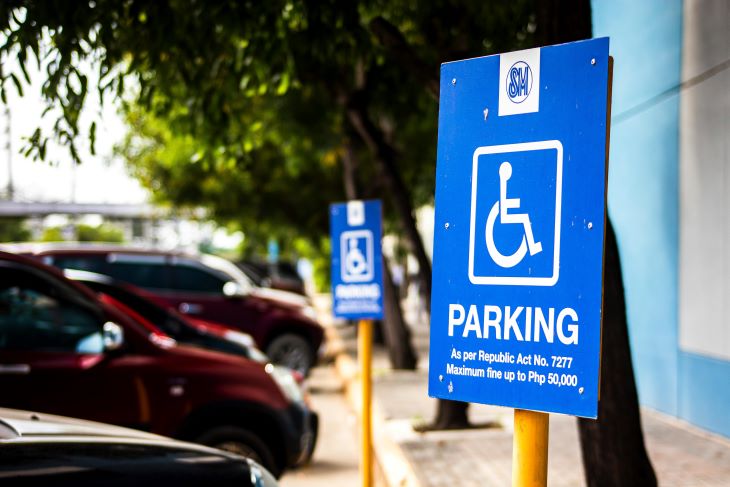Handicap parking permits are essential tools for enhancing the mobility and independence of individuals with disabilities. In Washington State, these permits ensure that eligible residents can access vital services and facilities with greater ease.
While the application process for a handicapped parking permit in Washington State might initially appear complex, a clear understanding of the state’s specific requirements and procedures can make it much more manageable. In this article, we present a detailed guide on how to apply for and utilize a handicapped parking permit in Washington State, ensuring a smoother and more informed experience tailored to the state’s regulations.
Understanding Handicap Parking Permits
What is the Purpose of a Handicap Parking Permit in Washington State?
The purpose of a handicap parking permit in Washington State is to ensure that individuals with disabilities have convenient access to essential services and facilities. These permits allow eligible individuals to park in designated spaces that are located closer to building entrances, making it easier for them to navigate their surroundings and maintain their independence. By providing this accessibility, Washington State aims to support the mobility and well-being of its residents with disabilities, ensuring they can participate fully in daily activities and access critical services without undue hardship.
Types of Permits Available in Washington State
Washington State offers several types of handicap parking permits to accommodate the varying needs of individuals with disabilities. These permits include:
- Permanent Disability Placard: Issued to individuals with a permanent disability that significantly impairs their mobility. This placard is valid for five years and can be renewed.
- Temporary Disability Placard: Designed for individuals with a temporary disability or medical condition that affects their mobility. This placard is valid for up to six months and can be renewed if the condition persists.
- Disabled Parking License Plates: Available for individuals with permanent disabilities, these special license plates replace the standard plates on the vehicle. They provide the same parking privileges as a permanent placard.
- Disabled Veterans License Plates: Issued to veterans with a service-connected disability rating of 100% from the Department of Veterans Affairs. These plates offer the same benefits as other disability parking permits.
- Organizational Placard: Issued to organizations that regularly transport individuals with disabilities. This placard allows the organization to use designated handicapped parking spaces when transporting eligible individuals.
Eligibility Criteria for Obtaining a Handicapped Permit
To be eligible for a handicap parking permit in Washington State, an individual must have a disability or medical condition that significantly impairs their mobility. The eligibility criteria include specific medical conditions and impairments, such as:
- Inability to Walk Without Assistance: The individual cannot walk 200 feet without stopping to rest.
- Severe Mobility Impairments: Conditions that require the use of a wheelchair, walker, crutch, brace, prosthetic device, or another assistive mobility device.
- Lung Disease: Conditions that restrict breathing to such an extent that the individual’s forced expiratory volume for one second, when measured by spirometry, is less than one liter, or arterial oxygen tension is less than 60 mm/hg on room air at rest.
- Cardiac Conditions: Class III or IV as defined by the American Heart Association, which significantly limits the individual’s physical activity and requires rest.
- Arthritis: Severe arthritis that impairs mobility and the ability to walk.
- Neurological Disorders: Conditions such as multiple sclerosis, severely limit mobility and the ability to walk.
- Vision Impairment: Individuals who are legally blind.
- Loss of Limb: Individuals who have lost the use of one or more limbs or have significant limitations in the use of these limbs.
To apply for a handicap parking permit, individuals must have their medical condition or disability certified by a licensed healthcare provider, such as a physician, advanced registered nurse practitioner, or physician assistant. The healthcare provider must complete the necessary sections of the application form, verifying the individual’s qualifying condition or impairment. Let’s go over the required documentation in detail.
Required Documentation
Documentation Needed to Prove Eligibility
To obtain a handicapped parking permit in Washington State, applicants must provide medical certification from a licensed healthcare provider. This certification must detail the nature and extent of the applicant’s disability, specifically outlining how the disability impairs their mobility and justifies the need for a handicapped parking permit. The documentation should include:
- A Detailed Description of the Disability: This should explain the medical condition, how it affects the applicant’s ability to walk, and why a handicapped parking permit is necessary.
- Certification by a Licensed Healthcare Provider: The healthcare provider must be a physician, advanced registered nurse practitioner, physician assistant, or another authorized medical professional. They must complete the relevant sections of the application form to verify the applicant’s qualifying condition.
- Specific Mobility Impairments: Documentation should highlight how the disability limits the individual’s mobility, such as requiring the use of a wheelchair, walker, crutches, or other assistive devices.
Examples of Acceptable Medical Conditions for Obtaining a Permit
Applicants may qualify for a handicapped parking permit if they have medical conditions that significantly impair their mobility. Commonly accepted conditions include, but are not limited to:
- Significant Mobility Limitations Due to Arthritis or Joint Disorders: Conditions such as severe osteoarthritis or rheumatoid arthritis that impede walking.
- Severe Cardiovascular Conditions Affecting Endurance: Examples include congestive heart failure or severe coronary artery disease that restricts physical activity.
- Chronic Pain Conditions Impairing Walking Ability: Conditions like severe chronic back pain or fibromyalgia that substantially limit mobility.
- Neurological Disorders: Diseases such as multiple sclerosis or Parkinson’s disease that impact motor functions and walking ability.
- Respiratory Conditions: Severe chronic obstructive pulmonary disease (COPD) or other lung diseases that limit walking distance due to breathlessness.
Ensure you check with your professional healthcare provider about your disability or reduced mobility to determine if you qualify for the handicapped parking placard in Washington State.
Additional Requirements for Temporary Permits
For temporary handicap parking permits, additional documentation is required to indicate the expected duration of the disability. This can include:
- Prognosis Reports: Documents from the healthcare provider outlining the expected recovery period and how long the disability will last.
- Surgery Schedules: If the disability is due to a surgical procedure, a schedule or note from the surgeon indicating the recovery time.
- Medical Treatment Plans: Detailed plans that show ongoing treatments and their anticipated impact on mobility, demonstrating the temporary nature of the condition.
Temporary permits are typically issued for a period of up to six months but can be renewed if the condition persists beyond the initial period. The renewal application must also include updated medical documentation to support the continued need for the permit.

Application Process
Where and How to Obtain an Application Form
Application forms for handicap parking permits are available through the Washington State Department of Licensing (DOL) website, local DOL offices, and medical professionals who can assist in the application process.
You can also easily use our Dr. Handicap online platform to apply for your handicap placard today. We serve as an intermediary between handicapped drivers and the state’s DMV during the application process. You won’t need to wait in lines and you can complete the process from the convenience of your home.
Step-by-Step Guide to Completing the Application
Completing the application involves filling out personal information, providing medical certification, and specifying the type of permit requested (permanent or temporary). Detailed instructions accompany the application form to ensure completeness and accuracy.
On the Dr. Handicap platform, we provide an all-in-one service for customers where you can avoid a visit to the doctor’s office or hospital, complete a video consultation with one of our licensed doctors, and receive the appropriate DMV forms. All from the comfort of your home.
Submission Options: In-Person, by Mail, or Online
Applicants have the flexibility to submit their completed applications in person at DOL offices, by mail to designated addresses, or online through the official Washington DOL website. Each submission method has specific requirements to ensure processing efficiency.
Evaluation and Approval
Overview of the Review Process
Upon receiving the application, the Washington DOL reviews the submitted documentation to verify eligibility. This may involve contacting the healthcare provider for additional information or clarification.
Timelines for Application Processing
Processing times for handicapped parking permits vary but generally range from a few weeks to a month. Temporary permits are issued for the duration specified in the medical documentation, while permanent permits are valid for a set period before requiring renewal.
What to Expect After Submitting the Application
Applicants receive notification of approval or denial by mail or email. Approved applicants receive their handicapped parking permits along with instructions on proper use and renewal procedures.
Once you receive your handicap placard, ensure you learn about the do’s and don’ts of handicap parking etiquette and you’re rights as a handicap driver.
Renewal and Replacement
Information on Permit Expiration Dates
Handicap parking permits in Washington State have expiration dates that vary based on the type of permit issued. Permanent permits typically require renewal every several years, while temporary permits expire upon the stated duration of the disability.
Procedures for Renewing a Permit
To renew a handicapped parking permit, individuals must submit updated medical certifications confirming the ongoing need for the permit. Renewal applications follow a similar process to initial applications, ensuring continued eligibility.
Steps to Take if a Permit is Lost or Stolen
In cases of lost or stolen permits, individuals must report the incident to the Washington DOL and provide the necessary documentation to obtain a replacement permit. Temporary permits may require a reevaluation of the disability status.
Learn more details on our post, ‘How Do I Replace a Lost or Stolen Handicap Parking Permit’
Using the Handicap Parking Permit
Proper Display of the Permit
Permits must be prominently displayed on the vehicle’s rearview mirror when parked in designated handicap spaces. This ensures visibility to enforcement officers and prevents misuse.
Permitted Parking Locations and Regulations
Handicap parking permits allow parking in designated accessible spaces marked with the international symbol of accessibility. These spaces are strategically located near building entrances to facilitate easy access.
Penalties for Misuse or Abuse of the Permit
Misuse or abuse of a handicapped parking permit, including unauthorized use by individuals not eligible for the permit, carries significant penalties. Violators may face fines, permit revocation, or legal consequences for fraudulent use. You can find out more about the legal consequences of misusing handicap parking permits in our blog.
Washington State Handicapped Placard: All You Need To Know
Understanding the process of applying for a handicapped parking permit in Washington State involves knowing eligibility criteria, required documentation, application procedures, and proper permit usage.
Access to handicapped parking spaces significantly enhances the quality of life for individuals with disabilities by reducing physical barriers and promoting independence. Knowledge of the application process ensures eligible individuals can obtain and utilize these permits effectively.
Washington State provides accessible resources and support to assist individuals in obtaining handicapped parking permits. By taking advantage of these resources, eligible individuals can navigate the application process with confidence and gain access to essential parking accommodations.
In conclusion, applying for a handicapped parking permit in Washington State requires understanding the eligibility criteria, gathering necessary documentation, completing the application accurately, and adhering to permit usage regulations. By following these guidelines, individuals can ensure they receive the necessary accommodations to facilitate their mobility and accessibility needs.
Need more information on disabled parking in the US? We offer a useful bank of detailed topics on the Dr Handicap blog. Check it out today!
Featured image by John Callery on Pexels.





